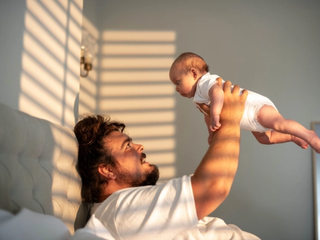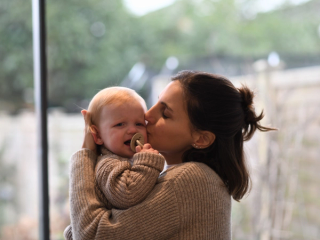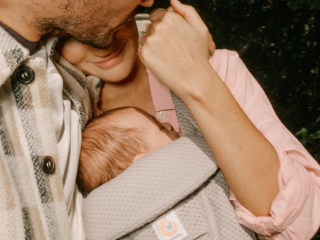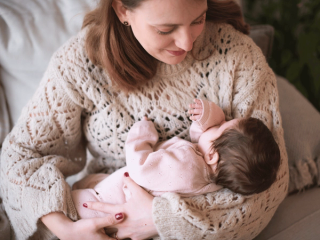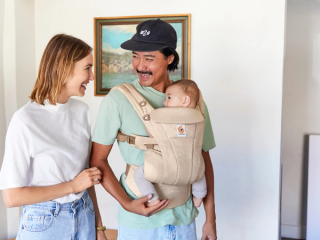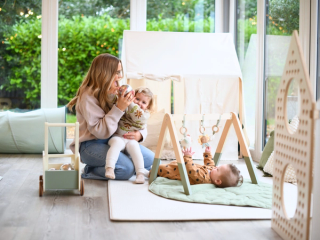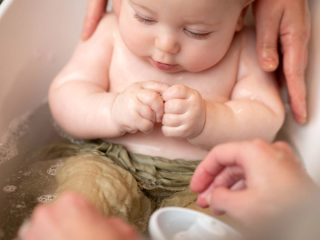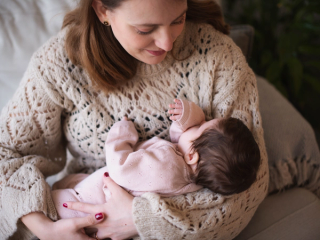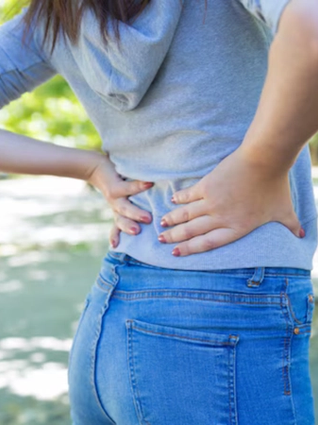
- Home
- Advice Hub
- Newborn
- New Parent Support
- Postpartum Pelvic Girdle Pain
Postpartum Pelvic Girdle Pain
Our Pelvic Health Physiotherapist Aby shares what it is, why it doesn't always go after pregnancy and what you can do about it.
Post partum pelvic girdle pain (PP-PGP) is an umbrella term for any continuing pain in the pelvic area after you’ve given birth. This could be the pubic bone, the hips, the groin, your bum – even the low back area is encompassed by this diagnosis. Many of us would have experienced it in pregnancy. It’s estimated 45% of us were wincing as we rolled over in bed for the hundredth time that night. For most, that pain disappears once you have your personal space back internally. For the unlucky 5% they will continue to have severe pain.
How does it get diagnosed?
If pain levels are severe and persisting postpartum it’s important to rule out infection, injuries or something more sinister. However, usually there would be other symptoms or a history that would indicate this. These investigations are requested by your GP. If all other causes of the pain have been cleared then you would get a diagnosis of PP-PGP.
So why has my pain not gone away after pregnancy?
I can’t answer that question specifically for you, because pain is complex and your experience is unique. What we can talk about is risk factors. So, when researchers look at large groups of women with and without PP-PGP, what similarities do those with pain have?
- Pelvic girdle pain in pregnancy
- A history of low back pain
- Depression and anxiety
- A BMI over 25 going into pregnancy
- Heavy workload in pregnancy
When we look at those risk factors and other research, none of them match with the outdated theory that birth hormones make your pelvis weak and wobbly causing unstable joints. This has been debunked entirely in current medical research. What the research does indicate is an error in the pain communication system and the conditioning of your body to tolerate the strain of pregnancy and birth.
All pain is created in the same area of your brain, whether you broke your leg or your hands get really cold. Pain is a sensitivity system, it does not indicate the presence or severity of actual damage. Just think of when you stub your toe and you’re sure your whole toe has exploded, yet there’s no mark when you look. Your brain perceived the level of impact of your toe against the chair to be high, so it gave you a severe pain alarm to make you check. When you look at your toe and see it is absolutely fine, the pain subsides quickly as the perceived threat is over.
Let’s now go back to your PP-PGP. Lots of us get it in pregnancy because of the stress it places on our body physically and mentally and I don’t necessarily mean stress in a negative way. You can really enjoy your pregnancy and get PGP. By stress I mean an ever-increasing physical demand over 9 months and the emotions of navigating preparing to be a parent. It’s a lot!
So, if you’ve already experienced PGP in pregnancy, maybe have had low back issues before, are anxious, perhaps your birth was traumatic, or you felt very low during your pregnancy and still do, your pain system might be hypersensitive. If the brain never feels that the perceived threat is over, the pain message will continue to be sent.
What can I do about it?
You will be pleased to hear that PP-PGP is absolutely treatable. The gold standard would be to see a pelvic health physiotherapist/physical therapist for an individualised treatment plan. We need to find the factors that are driving your pain, and why the system won’t chill out. But let’s talk through what an assessment and treatment plan might include.
The assessment should delve into the pattern of your pain, things that make it worse, things that help. We want to see how you are moving and look at those movements that trigger the pain. We also want to screen for any pelvic floor dysfunction, look at your gut health, delve into what kind of sleep you’re getting and anything that might be causing stress. Remember – not necessarily in a negative way. Stress = high demand. This helps to paint a picture of your PP-PGP and identify your pain drivers.
A good assessment makes the treatment plan straightforward. We remove or manage those pain drivers. If there is constipation, we look at why and treat it. Are there better ways you can pace your day? Moments where you can recharge to allow your central nervous system to go into the rest and digest state? Are you moving enough? We need to rebuild the strength that inevitably reduces during pregnancy and desensitise your pain system to the movements that trigger the pain. And the sleep one I won’t say too much about, as you have a baby! But could you get to bed a little earlier? Create a better wind- down routine for yourself? Maybe not scroll on your phone during the night feed, waking you up more than is necessary? Control what you can control.
In summary, your plan should get you moving, pooping well, managing stress, and encouraging sleep. But what that looks like is unique to you. So please, get some support. You don’t need to put up with it!
Advice & tips

Want to read more? Join the HiPP BabyClub for full access to this article.
As a BabyClub member, you'll get access to a range of exclusive benefits, including:
Monthly competitions
Discounts from our Partners
Expert advice tailored to your little one's age
Weaning recipes
HiPP shop discounts*
*10% off HiPP's online shop does not apply to our First Infant, Anti-Reflux or Comfort Formula Milk.
Important notice: Breastfeeding is best. Follow on milk should only be used as part of a mixed diet from 6 months. Talk to a healthcare professional.




